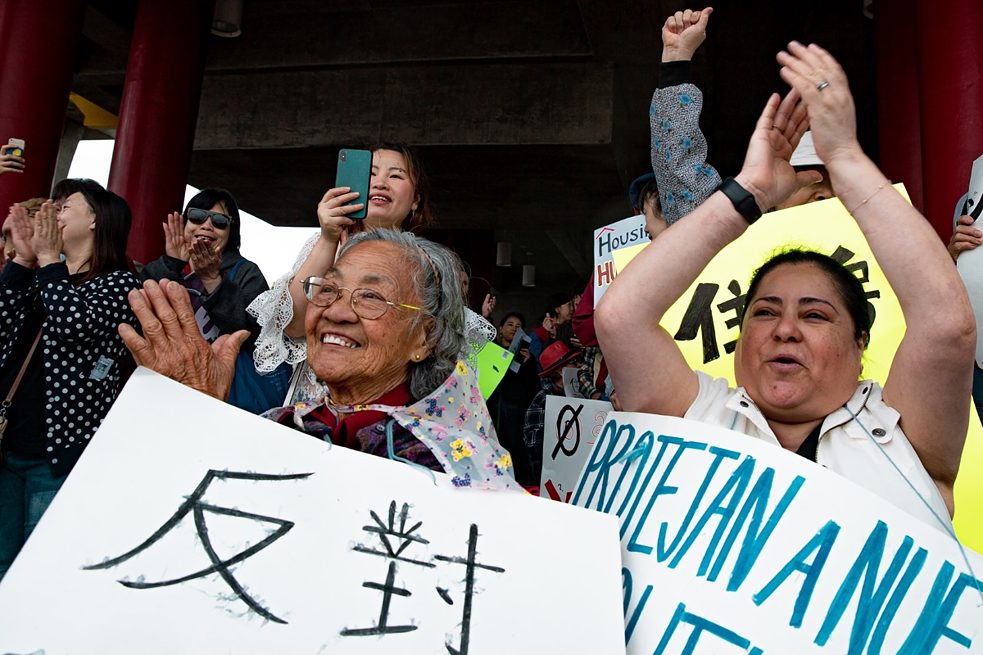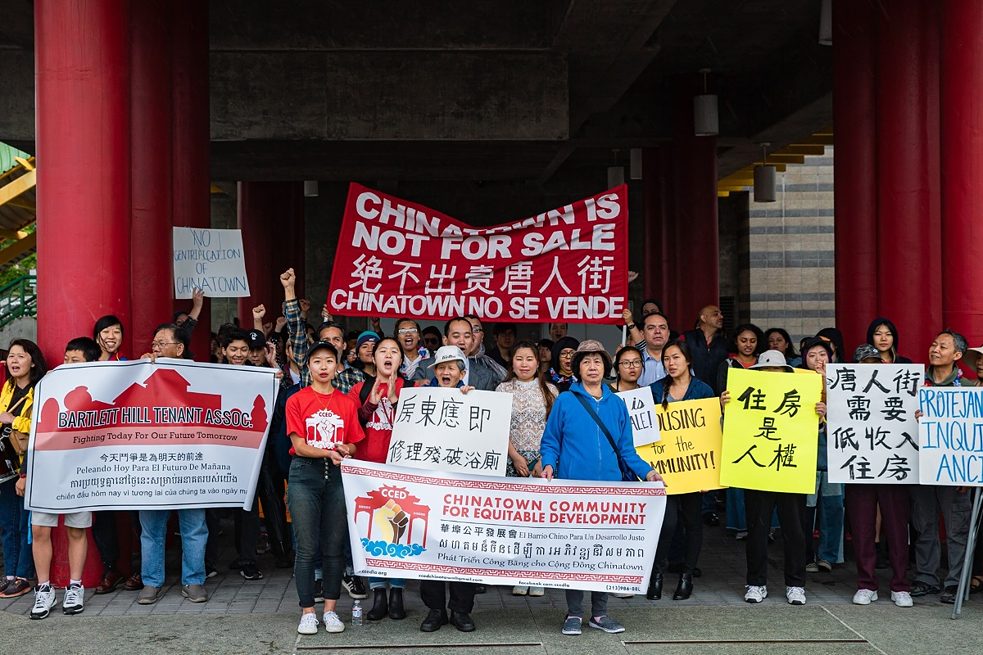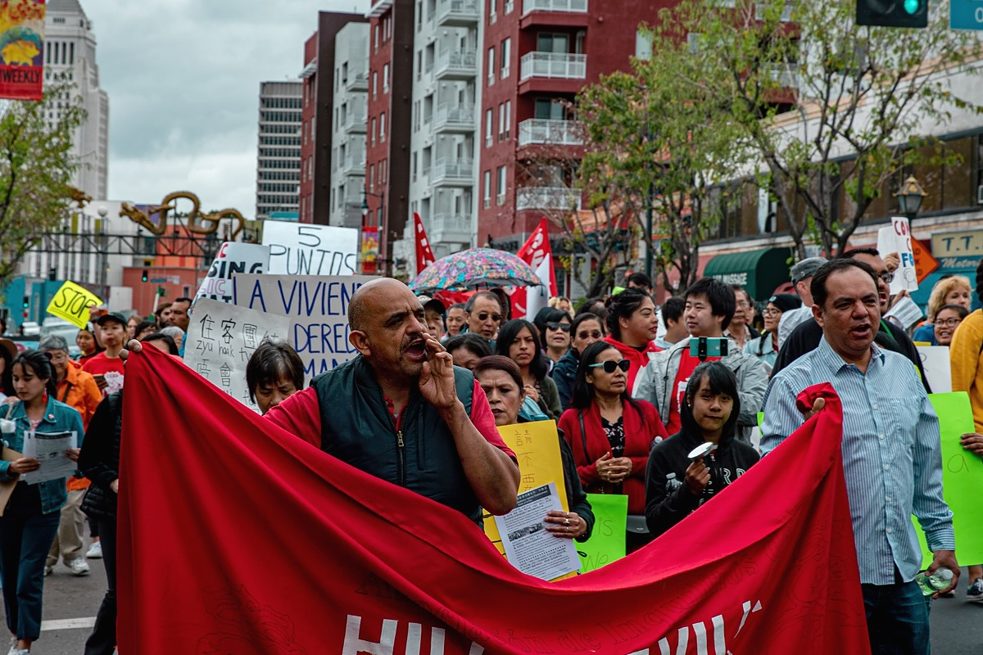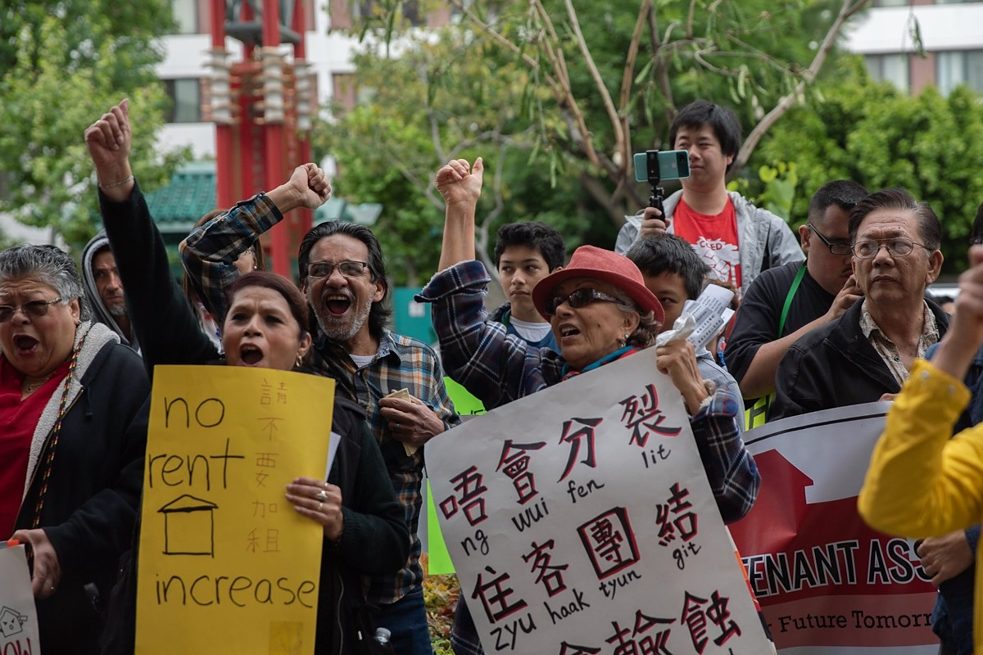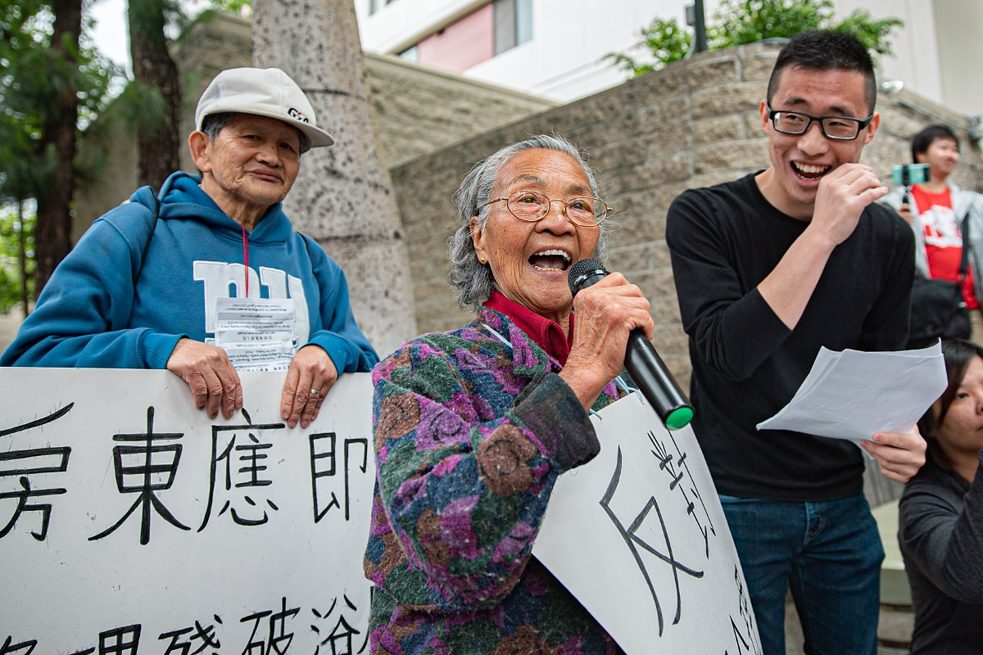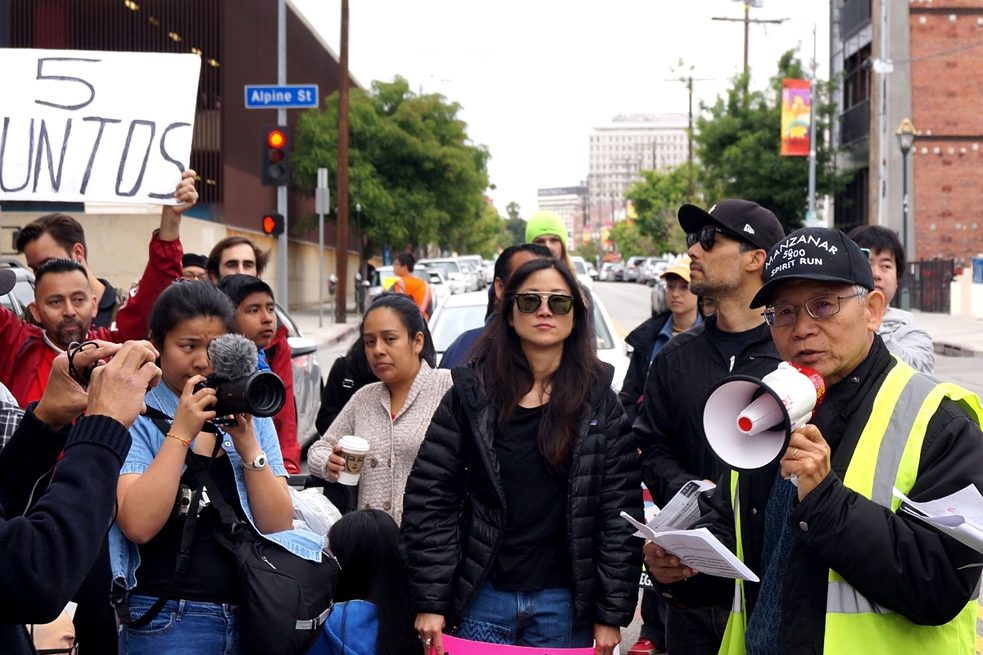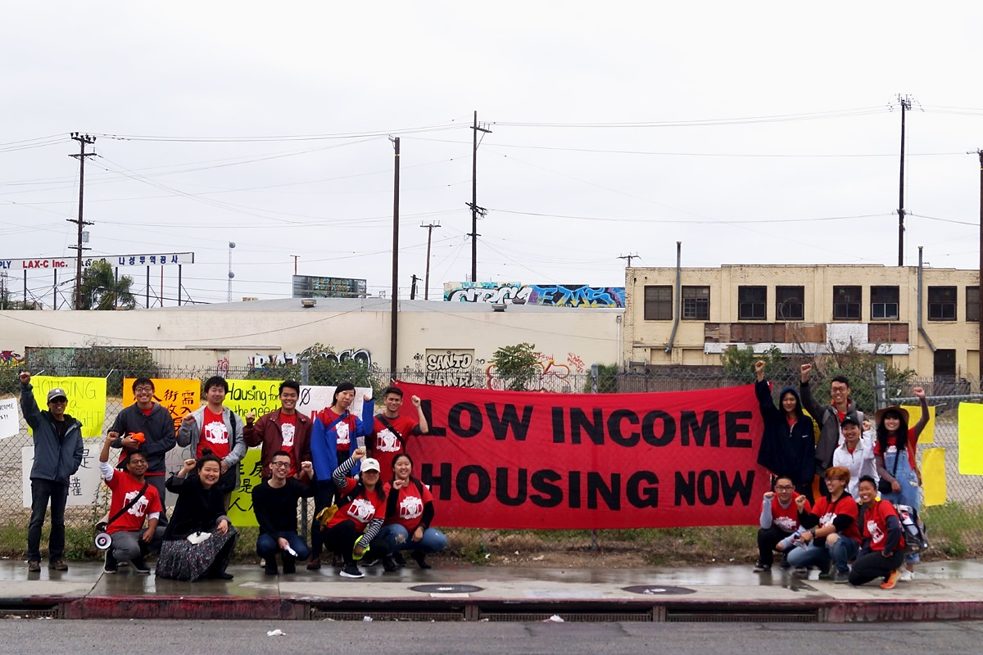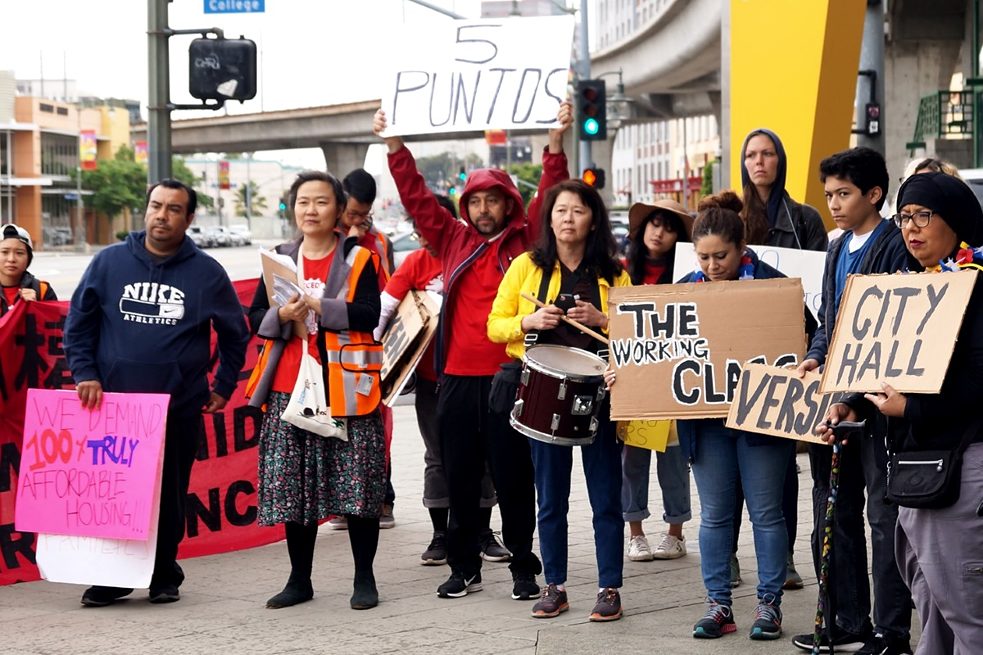Worlds of Homelessness
Focus on People rather than Buildings – A Movement-based exploration of Conflicts around Housing in LA
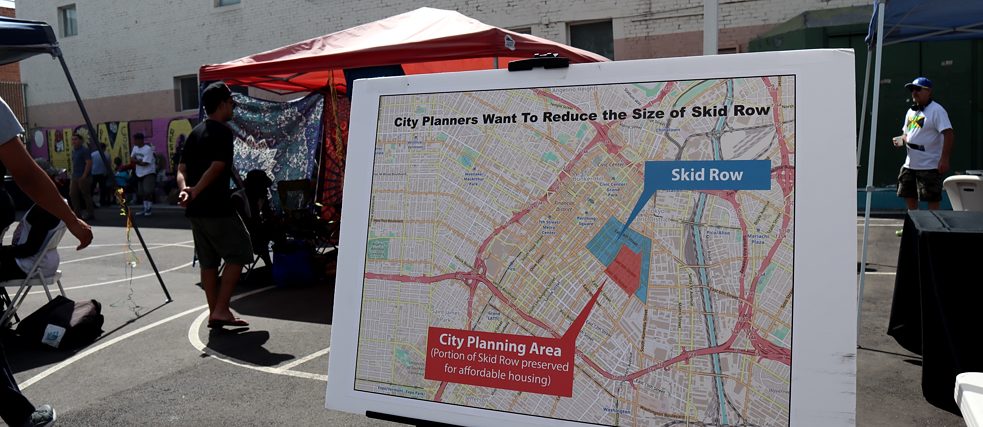
New art galleries next to traditional pharmacies for Chinese medicine, LA's latest fast-food chicken next to freshly pressed sugar cane juice. Living in Chinatown is very much in demand not only because of being close to the city center but also its lively vibe. But just like so many other trending neighborhoods around the world, Chinatown is changing rapidly. The local community is confronted with the forces of gentrification.
By Lisa Riedner
I visited the neighborhood for the first time on May 26, 2019, to join a demonstration organized by Chinatown Community for Equitable Development (CCED), a multi-ethnic, multi-generational community organization. According to CCED, 7000 market-rate units are being developed in Chinatown while at the same time, poorer residents have to leave as they encounter rent increases, harassment from their landlords and evictions. In front of Starbucks and the market rate, Jia Apartments tenants from the nearby Hillside Villa told of their struggles to stay in their homes. The 124 units of their apartment complex had been rent-controlled for 30 years but in 2018 the affordability covenant expired and the landlord increased the rents to market rate. Some tenants were faced with a rent increase of 700 Dollars a month. The landlord also threatened them with eviction. The tenants, mainly low-income and immigrant families, rejected the rent increases. They organized in the Hillside Villa Tenants Association and, with the intervention of the city, had almost reached a proposal of a 10 years extension of rent control. After their statements, we walked through the main market street. I handed out CCED's flyers to passers-by, shop owners and street sellers – most chose Chinese language and seemed to support the cause. The demonstration ended at College Station. The CCED has filed a lawsuit against this new development project earlier this year, as plans foresee 725 market-rate units and not one for affordable prices.
Other examples for housing struggles in LA include the landmark victory of a group of Mariachis' rent strike in Boyle Heights or the struggle of the tenants at Whitley Ave in Hollywood. The latter are fighting to prevent their building to be turned into a hotel. During the past years, tenants in LA organize increasingly and often successfully. Taking part in their protests and meetings or listening to their stories during my long drives through LA, I learned a lot not only about strategies of community organizing but also about central lines of conflict in our current historical conjuncture.
While many tenants have to leave their neighborhoods to find a new place to stay, others find themselves living on the streets. The Los Angeles Homeless Count from 2019 revealed that about 55,000 people became houseless in LA in 2018. The main reason is economic hardship. Wages have not kept pace with rental costs. Health care and education expenses can easily throw households into an economic abyss. One-third of all households in L.A. are severely rent-burdened, they pay more than 55 % of their income for rent. For the Los Angeles Tenants Union, houseless people are tenants, too -- unhoused tenants.
On any given night, more than 4,000 people experience houselessness in the 54-block area of L.A. called Skid Row. But this inner-city neighborhood is threatened by gentrification, too. The city aims to add 125.000 people and 70.000 housing units to Downtown LA until 2040. The new Downtown Community Plan (DTLA 2040) shall change zoning designations and thus allow market-rate housing across Skid Row. Several community organizations oppose the municipality's plan with the campaign Skid Row – now and 2040. At a local reggae festival, one of their organizers explained to me why they thought that the new zoning proposal would be detrimental for the Skid Row Community. The city's development plan would drive up rents and lead to the eviction of up to 4,800 people living in low-cost housing and also displace more than 2,000 people who live on these streets. The campaign's policy recommendations include building housing for low- and extremely-low-income tenants, anti-displacement protections and that the Skid Row community should be involved in the planning process. „It has to be about housing the homeless first“, community organizer Suzette Shaw said at a press conference of Skid Row Now & 2040 on July 16, 2019.
These different community organizations and their housing struggles do not only share their opposition against market driven development projects. They also understand the housing crisis as a racialized issue. According to the LA Homeless Count, only 24,7 % of people experiencing houselessness are white, while every third is Black/African American and even more Latinx people are unhoused (36,5%). Gentrification „creates spaces inaccessible to working-class residents of color, literally erasing their bodies by limiting their ability to afford, feel welcomed, or exist in these spaces“ as the CCED explains.
When we call this crisis a housing crisis, it benefits the people who design housing, who build housing, who profit from housing, not the people who live in it. It encourages us to think in abstractions, in numbers, in interchangeable 'units,' and not about people, or about power.
Tracy Jeanne Rosenthal - Member L.A. Tenants Union
Earlier this year, the Los Angeles Homeless Authority counted 36,000 unhoused residents in the city of L.A. Uncounted tenants are just one paycheck away from losing their homes. My movement-based research during the summer of 2019 convinced me, that market-oriented development projects are not going to solve this crisis but rather reinforce racialized inequalities. At the same time, it was inspiring to see that (un)housed tenants' struggles against these processes of displacement and for the human right of housing are gaining strength in the Californian metropolis.
